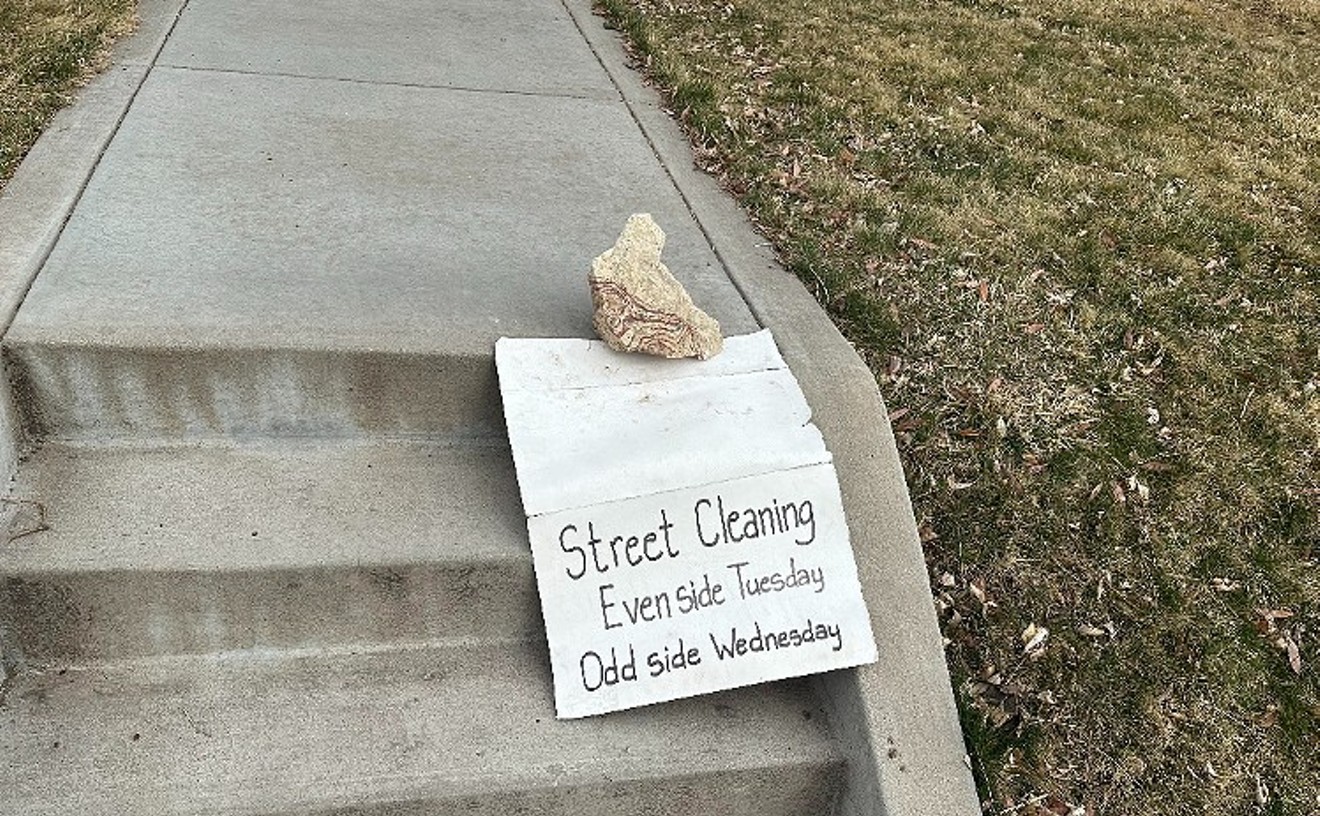Better yet, ask some of the residents. Ask Janice, Shannon, Debra, Cheryl and Elizabeth--the women of supermax.
Touted as a no-frills repository for hardened criminals and escape risks, CSP also holds a surprising number of low-level offenders--including several women. A survey conducted by a prison monitoring group last spring indicates that almost half of the male inmates at the 504-bed hoosegow were classified by the Colorado Department of Corrections (DOC) as nonviolent. And eleven of the fourteen inmates in the women's unit were serving time for minor, nonviolent felonies such as theft, forgery and substance abuse.
Prison officials say prisoners aren't sent to CSP based on the nature of their crimes but as punishment for misbehavior while in the correctional system. The threat of getting sent to CSP has lowered the rate of assaults throughout the system, they claim.
"CSP has worked as designed, in that the rest of the system is operating rather quietly," insists DOC spokeswoman Liz McDonough. "It's a management tool for us."
But Christie Donner of the Rocky Mountain Peace Center in Boulder, who administered the center's study of CSP inmates, views the female presence there as a glaring example of the arbitrariness of the state's placement policies. Many of the women she surveyed, Donner contends, have been sent to CSP as a result of "very minor infractions" of prison rules.
"When you scratch beneath the surface of these [infractions], some of them seem to be exaggerated," Donner says.
Opened in 1993, CSP is one of the most restrictive high-security prisons in the country. Although technically not a supermax because inmates must leave their cells for showers, in other respects the CSP offers a harsher level of confinement than even the U.S. Penitentiary Administrative Maximum (ADX), the federal prison in Florence that houses terrorists and other high-profile inmates. At ADX, inmates are permitted contact with other prisoners during outdoor recreation periods; at CSP, inmates are only allowed out of their cells in shackles for an hour a day of isolated activity. Exercise is a solitary affair, in a narrow room with a small vent for fresh air.
CSP's spartan design and "total isolation" approach has proven so appealing to corrections officials that it's being copied in other states. A virtual clone of the prison is now being built in Youngstown, Ohio, to house the "worst of the worst" in that state, including the ringleaders of the deadly 1993 Lucasville prison riot. But few, if any, states have followed Colorado's lead in reserving a block of cells in a supermax prison for women.
"I'm not familiar with any other state that's doing this," says Joseph Lehman, commissioner of the Maine Department of Corrections, who chairs a committee on prison standards for the American Correctional Association. "It's very unusual."
But CSP is a very unusual place, even by corrections standards. The appropriation bill for the project originally specified a "close" prison--between medium and maximum security. When state legislators discovered that CSP had been converted into a supermax, "it became a rather sore issue," McDonough concedes.
According to McDonough, the shift in CSP's mission had little effect on its design, although staffing levels did increase. The decision was based on DOC officials' growing alarm over a rising number of disruptive inmates in the general prison population; the sixteen-bed women's unit was built to handle the biggest troublemakers from the women's prison in Canon City.
There's no minimum number of infractions that a prisoner must have to be sent to CSP. Each inmate's case is considered at an individual hearing and reviewed monthly. Of the women who responded to Donner's survey, most had several write-ups for rules violations. But Donner found a host of petty offenses--"verbal abuse," "refusal to work," "smoking in the hole," and so on--and few high crimes.
One respondent claimed that while being carried into isolation for "yelling," she suffered a seizure, kicked a guard--and was then charged with assault. "I feel there is no longer a world out there for me," wrote the inmate, a 25-year-old woman serving a two-year sentence for drug possession and check fraud. Donner says the woman believes she was sent to CSP because of mental illness and that isolation will only make her condition worse.
McDonough says that inmates diagnosed as mentally ill aren't sent to CSP but to the department's new facility for psychiatric and developmentally disabled cases. "If someone is having behavioral problems due to mental illness, they will be at San Carlos," she says. "I really believe we do a pretty good job of making that determination."
However, Donner contends that the placement of women in CSP may have as much to do with available bed space as any other factor. At present the Colorado Women's Correctional Facility is operating at its 267-bed capacity. Last spring a minimum-security center in Pueblo was converted to house women rather than men, and the legislature approved construction of another 500-bed women's prison in order to deal with what McDonough describes as a "large female backlog" in the system.
"My feeling is that they want to fill up the place," Donner says. "After all, they have the beds."
McDonough, though, points out that the number of women in CSP has dropped substantially since Donner's group conducted its survey. As of last week there were only five women in supermax: Janice Haught, Shannon Irwin, Debra Brown, Cheryl Curtis and Elizabeth Parker. Four have lengthy records of rules infractions ranging from assault to drug abuse to "advocating facility disruption."
"They're not there because of lack of beds elsewhere," McDonough says. "They're there because of their behavior."
But the fifth resident of the women's unit, Parker--a 45-year-old inmate serving a ten-year sentence for a 1989 assault conviction--is not as easy to account for. Parker was sent to CSP in 1993, shortly after it opened, even though her record indicates only two prior rules infractions--and none since 1990. She received one more write-up (for "disobeying a lawful order," McDonough says) shortly after arriving at CSP. Despite monthly reviews of her status, she's been in isolation ever since.
Lehman, who's been involved in administering supermax-type facilities in several states, concedes that isolation may not be the best solution to some "management problems" and can, in some cases, make matters worse. "My big concern is that there has to be some element of programming offered," he says. "You may be able to control a person's behavior by putting him in [isolation], but that person still represents a risk to the institution. And sometimes what you get is a self-fulfilling prophecy."
The corrections committee Lehman chairs is now trying to develop national standards for the operation of supermax prisons. "There's been some recognition out there that we ought to be looking at this," he says.











